Introduction: Globally, over 2 million PET bottles are consumed every minute. Yet the performance requirements for bottles containing water, juice, carbonated drinks (soda), and dairy products (milk, yogurt, etc.) diverge significantly – by as much as 37%. From ultra-thin lightweight walls to high-pressure burst resistance, from acid corrosion resistance to near-absolute oxygen barriers, the intrinsic “character” of different liquids demands vastly different containers. Traditional “one-size-fits-all” blow molding machines struggle to meet this escalating precision. The scientific properties of liquids themselves are now the key driver redefining the boundaries of PET blow molding technology.
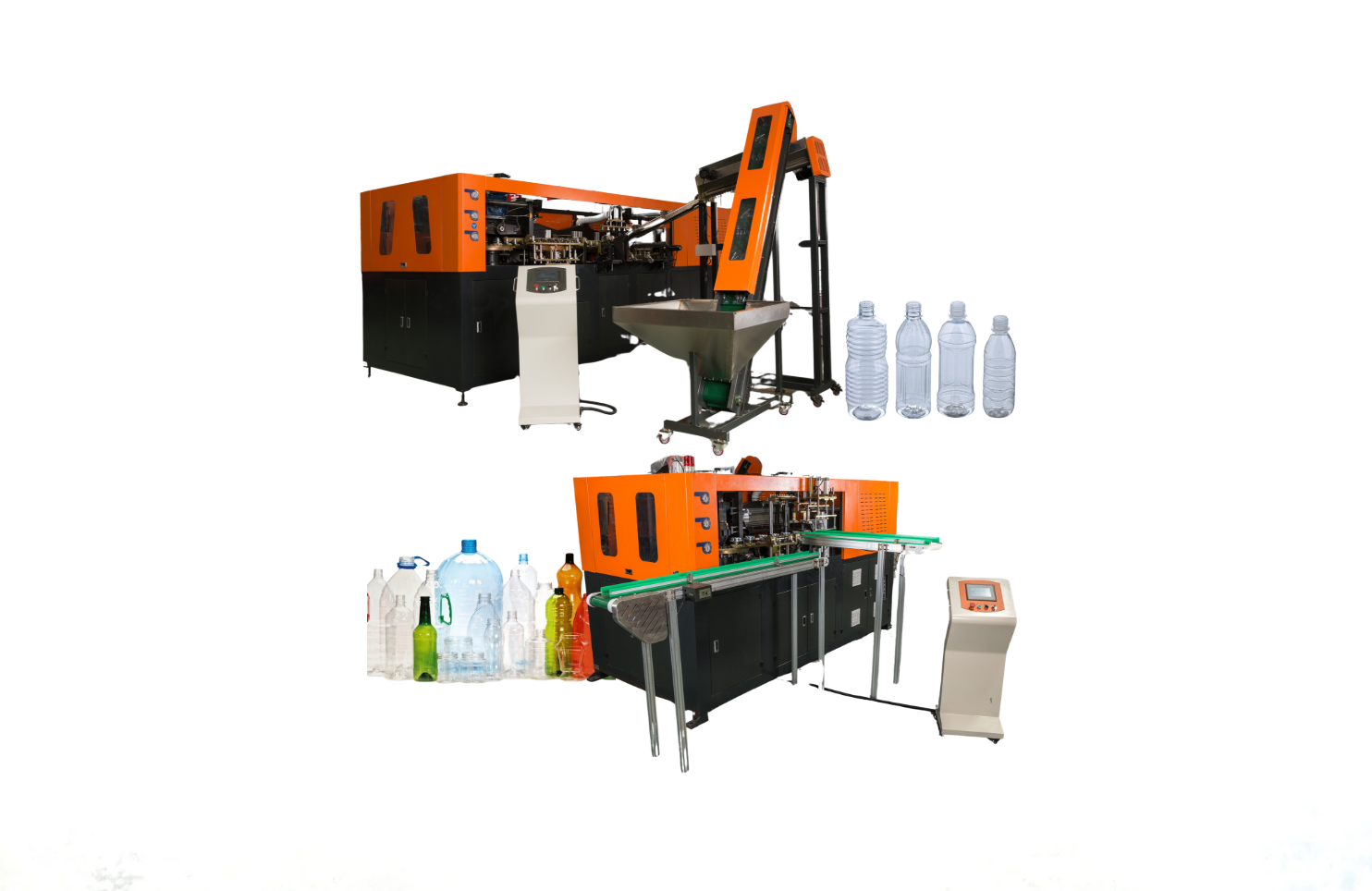
I. Foundational Requirements: The Non-Negotiables of Blow Molding
Regardless of content, PET bottles must deliver core qualities:
-
Sterility & Safety Assurance:
-
Core Technology: Vaporized Hydrogen Peroxide (VHP) Dry Sterilization. This ensures chemical residues consistently below 0.1 ppm (significantly better than the 0.5 ppm national standard limit), eliminating microbial contamination risks and safeguarding product integrity.
-
-
Zero-Defect Sealing:
-
Precision Requirement: Ultra-high precision mold control systems maintain critical neck finish dimensional tolerances ≤ 0.03 mm. Industry data shows even a 0.1 mm deviation can cause leakage rates up to 30%, risking product spoilage and recalls.
-
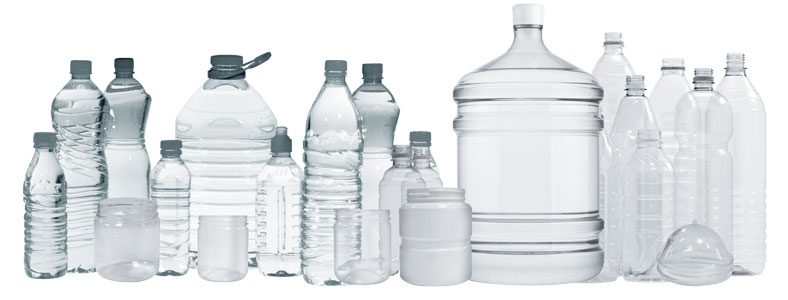
II. Liquid-Driven Engineering: Technical Solutions for Four Key Segments
Distinct liquid properties necessitate tailored blow molding strategies:
-
✅ Segment 1: Bottled Water – Pushing the Limits of Lightweighting
-
Core Challenge: Minimizing bottle weight (e.g., 12g for 500ml) while ensuring strength and effective oxygen barrier.
-
Technical Solutions:
-
Thin-Wall High-Speed Molding: Intelligent air recovery and dynamic pressure control systems enable stable, high-speed production of ultra-thin walls. This slashes energy consumption (~30%) and supports high outputs (24,000 bottles/hour).
-
Base Reinforcement: Micro-rib reinforced base designs achieve weight reductions up to 31% while passing rigorous drop tests (100% success rate) and enhancing oxygen barrier (O₂ Transmission Rate < 0.01 cc/day).
-
-
Documented Results: Implementations show preform molding defect rates reduced by ~30%, with annual raw material savings reaching millions.
-
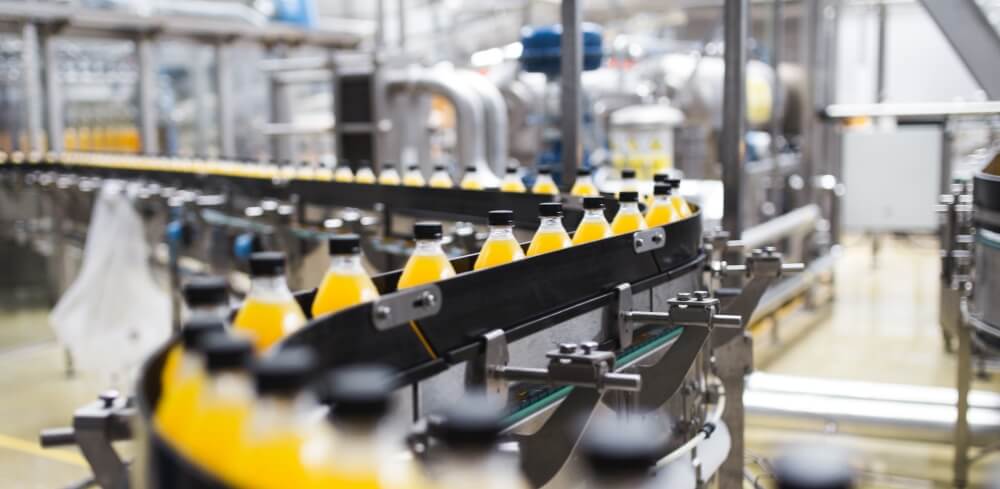
-
✅ Segment 2: Juice Drinks – Building Dual Barriers Against Corrosion & Light
-
Core Challenge: Resisting acidic corrosion (pH ≤ 3.5), blocking UV light to protect nutrients (e.g., Vitamin C), and preventing flavor degradation.
-
Technical Solutions:
-
Multi-Layer Coextrusion Barrier: PET/EVOH/PET sandwich co-extrusion die technology precisely controls the thickness of the central EVOH oxygen barrier layer (accuracy ±0.05 mm), creating effective acid resistance and high barrier performance.
-
Internal UV Barrier Coating: In-line nano-scale internal coating drastically reduces UV transmission (<5%). This boosts production yield (~20%) and crucially preserves key nutrients (e.g., >95% Vitamin C retention) throughout shelf life.
-
Precision Thermal Management: Infrared gradient temperature control (e.g., 160°C outer / 145°C inner layer) solves EVOH layer breakage during processing by precisely regulating layer temperatures.
-
-
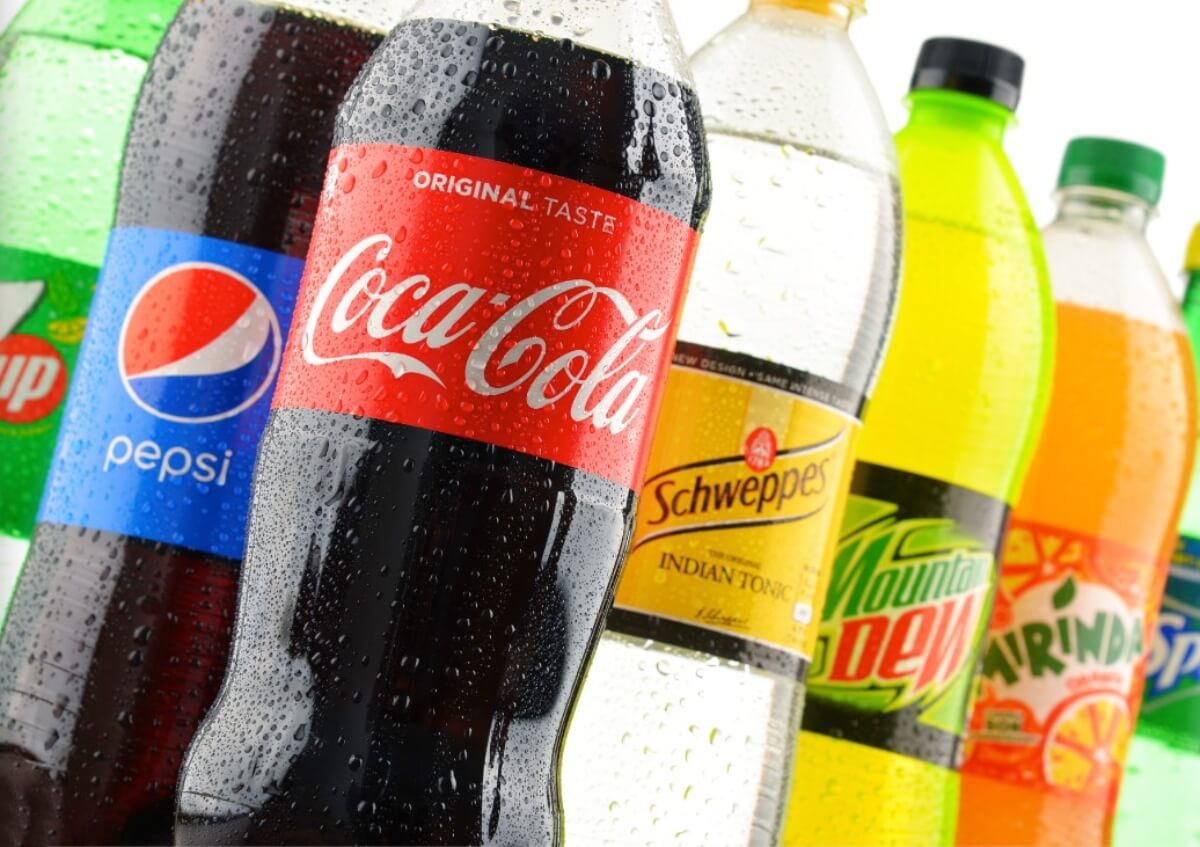
-
✅ Segment 3: Carbonated Beverages – Engineering for Pressure & Creep Resistance
-
Core Challenge: Withstanding high internal pressure during filling and storage (≥8 bar), resisting long-term pressure-induced creep (e.g., <0.3% shrinkage over 6 months), and preventing bottle bursting.
-
Technical Solutions:
-
Instant High-Pressure Stretch Blow Molding: Dual-stage high-pressure blow molding (e.g., 40 bar instantaneous pressure) ensures exceptional dimensional stability and burst resistance under pressure (burst rate < 0.001%).
-
Pressure-Optimized Base & Rapid Cooling: Pentagonal petaloid base geometry combined with turbulent flow cooling technology significantly increases overall pressure resistance (~50%), effectively suppresses creep, and extends shelf life (~40%).
-
-
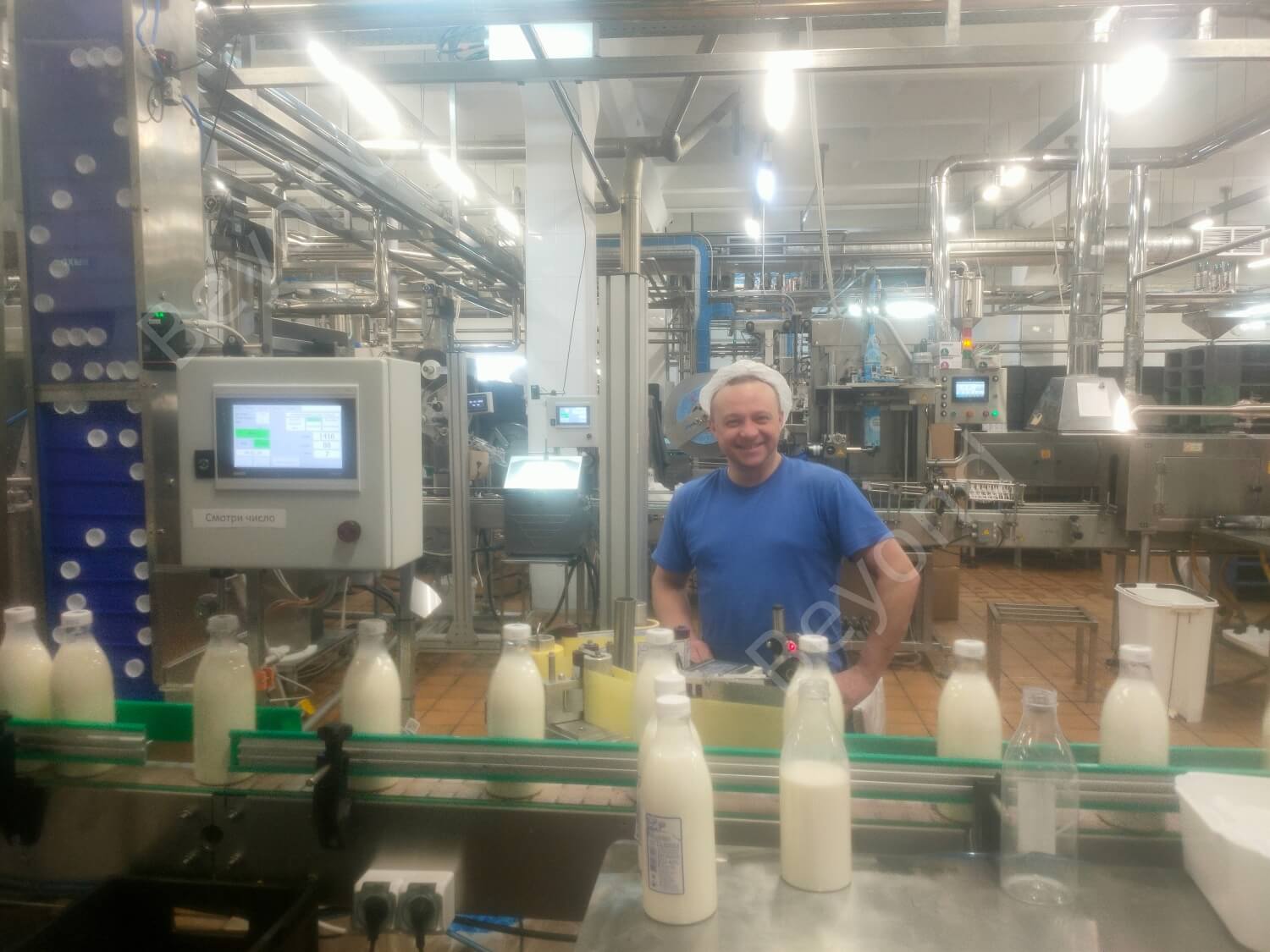
-
✅ Segment 4: Dairy Products – Mastering Oxygen Barrier & Low-Temperature Toughness
-
Core Challenge: Achieving supreme oxygen barrier (O₂ Transmission Rate < 0.001 cc/day) for freshness while ensuring bottles resist brittle fracture during cold filling (4°C/39°F) and refrigeration.
-
Technical Solutions:
-
Plasma-Enhanced Barrier: Plasma Internal Coating (PIC) technology deposits a dense, glass-like barrier layer inside the bottle, improving oxygen barrier efficiency by orders of magnitude for premium fresh dairy protection.
-
Low-Temperature Impact Modification: HDPE blend crystallization modification. Incorporating specific HDPE ratios into PET and optimizing crystallization dramatically improves low-temperature impact strength, reducing breakage rates during cold filling and storage to minimal levels (~0.01%).
-
-
III. Solving Industry Challenges: Advances in Blow Molding Technology
Key innovations address persistent industry pain points:
-
Rapid Changeover & Flexibility:
-
Breakthrough: Magnetically coupled quick-change nozzle systems reduce mold changeover times by over 70%. Lines can switch between producing water, juice, or dairy bottles within 15 minutes, enhancing agility.
-
-
Lightweight Strength Assurance:
-
Breakthrough: AI-powered real-time wall thickness control systems use high-speed vision to detect and dynamically adjust wall distribution during blowing. This maintains defect rates below 0.001% (vs. >0.5% on conventional machines) for reliable lightweight performance.
-
-
High-Quality rPET Utilization:
-
Breakthrough: Integrated Solid-State Polymerization (SSP) modules enhance recycled PET (rPET) performance. SSP mitigates issues like poor melt strength and uneven wall distribution caused by rPET’s thermal sensitivity, enabling stable production of high-content or 100% rPET bottles.
-
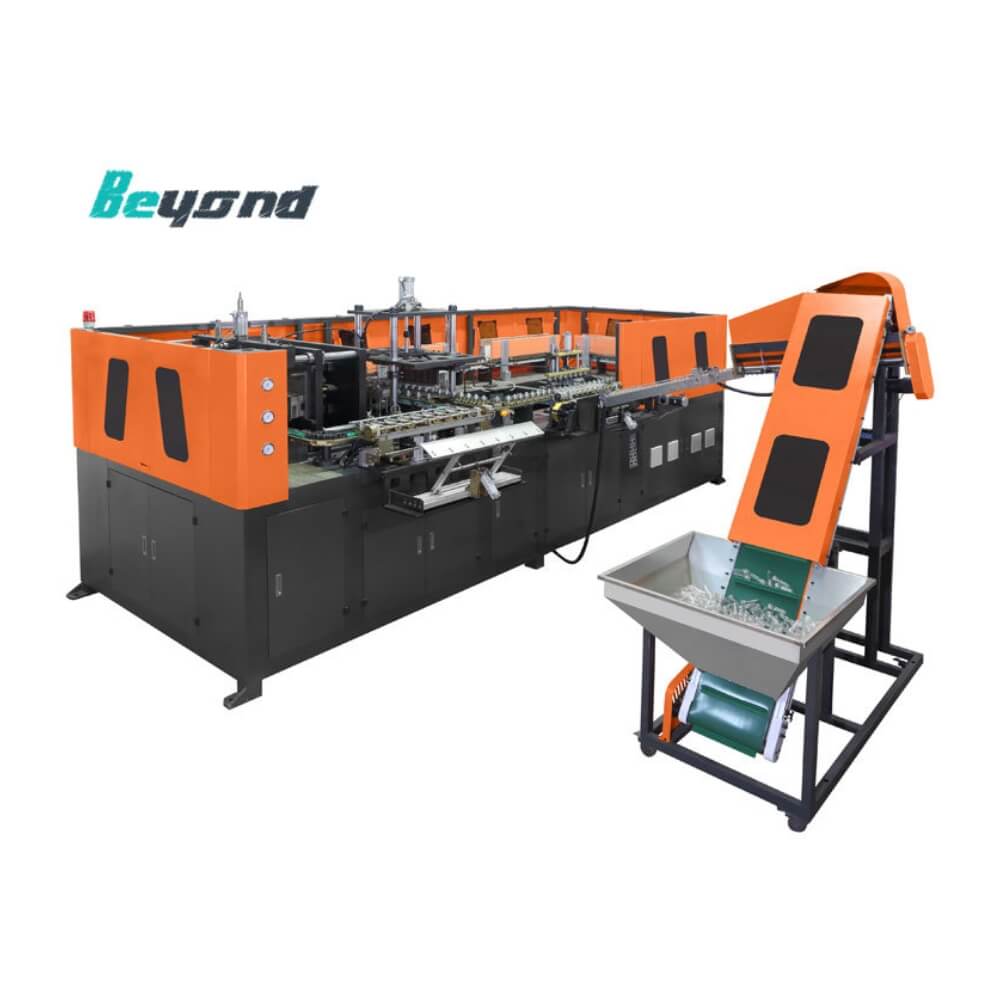
IV. The Future: Strategic Directions for Blow Molding
Technology evolution focuses on three critical paths:
-
🚀 Ultra-High-Speed Aseptic Integration:
-
Goal: Fully integrated “Blow-Fill-Seal” (BFS) or “Blow-Fill-Cap” lines within a single sterile environment, targeting speeds of 72,000 bottles/hour.
-
Key Enablers: Modular design (15-minute format change) + High-precision servo synchronization (millisecond response) + Advanced isolator sterile control. Reduces labor (~50%) and enhances sterility.
-
-
🌱 Carbon-Neutral Green Manufacturing:
-
Pathways & Benefits:
-
Electrification: High-efficiency electric heating systems replace fossil-fuel heaters, cutting direct energy use 25-35%.
-
Source Reduction: Advanced lightweight preform design reduces raw material consumption ~20%.
-
Energy Recovery: Optimized air recovery systems recycle compressed air energy, driving overall energy consumption down 40%.
-
-
-
🤖 Intelligent Closed-Loop Control:
-
Virtual Commissioning: Digital twin technology simulates and optimizes lines before physical build, cutting commissioning costs (~30%).
-
Smart Operations: 5G-enabled remote monitoring & predictive maintenance reduce unplanned downtime (~50%).
-
Process Optimization: AI algorithms analyze and dynamically optimize blow pressure and temperature profiles in real-time for intelligent quality control.
-
Conclusion: Defining a New Packaging Era with Liquid Science
A 500ml water bottle weighing just 12g (down from 32g), fresh milk lasting over 120 days in PET, or 100% rPET bottles passing 8 bar pressure tests – these are not aspirations, but tangible results achieved by deeply integrating liquid science into PET blow molding. The evolution of blow molding is fundamentally about crafting containers that precisely match and serve the unique “character” of the liquid within.


